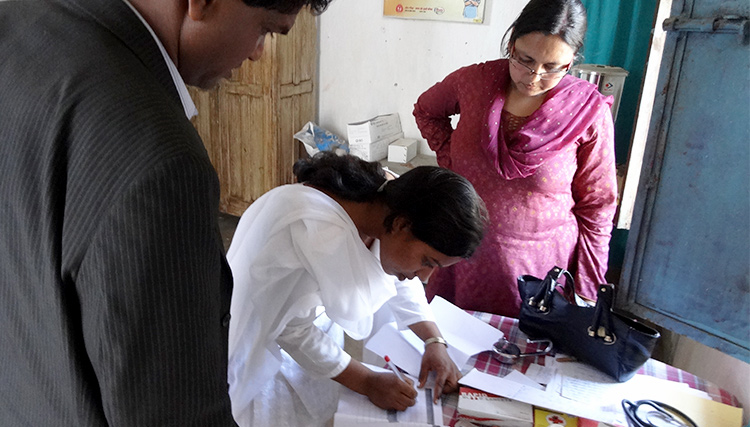The Health Policy Project ended in 2016. Work continued under Health Policy Plus (HP+) until 2022.
NEWS & VIEWS

Health Policy Project
October 1, 2014
Jay Gribble, Deputy Director, FP/RH and Senior Fellow
Health Policy Project, Futures Group
In recent years, experts have turned their attention to health systems rather than specific health areas (I avoid calling them disease areas because many conditions–such as pregnancy-related care and use of family planning–are conditions, not diseases). This approach makes a lot of sense, and we have seen both national and international resources put toward focusing on systems and their components. The World Health Organization (WHO) talks about six building blocks as being the cornerstones for stronger health systems, and ultimately, healthier people: health worker staffing, infrastructure, health commodities, logistics, tracking progress, and effective financing. Clearly, each of these blocks is critical to the effective operation of health systems, and research and implementation efforts have advanced our thinking about how to improve each of these components.
Yet knowing how complex health systems really are, I wonder if the notion of the six building blocks needs to be expanded; at the very least, a recognition that the blocks are interrelated. Commodities will not get to providers, and ultimately to end users, without a supply chain; and without financing, I don’t think anything will work. You see where I’m going. The interrelatedness of the blocks is critical to the success of the system, and treating them as separate, moveable parts downplays the synergies that take place when the blocks work in harmony. These six areas are not silos—and I don’t think they get treated that way—but as building blocks, they can be positioned in different ways. Some of those ways are more stable than others in creating health systems.
Yesterday, at the Third Global Symposium on Health Systems Research in Cape Town, I had the chance to hear an expanded way of thinking about health systems. Through the lens of complexity science, multidisciplinary teams are beginning to rethink how health systems can respond to pressing health issues. What makes sense to me about this approach is that it takes a more comprehensive view of health systems and brings the human element front and center. Through the use of mathematical modeling, scientists from the University of British Columbia (UBC), working with the Health Policy Project and USAID, have begun to consider how to optimize treatment for people living with HIV in various settings. Their approach starts with understanding that the system—and the people it serves– is complex and multifaceted. For example, patterns related to HIV transmission are also related to TB and sexually transmitted infections. Understanding transmission patterns, health seeking behavior, and proximity to different types of services are all part of the treatment optimization equation. Given their models are based on mathematical equations, the UBC/HPP team is able to draw on multiple sources of data to try to answer the questions about how to optimize treatment and resolve related health policy issues. They draw on published literature about transmission, service statistics about service utilization, survey data, and expert opinion—to mention only a few.
One of the aims in undertaking this type of research is to help policymakers understand the organic nature of health—that we cannot separate systems from the people who need and use them. I don’t think the UBC and HPP researchers would dispute the need to focus attention on the six areas encompassed in WHO’s building blocks, but these blocks can’t be addressed in isolation. The fundamental reason for health systems to exist is to be able to respond to the needs of people and, as complexity science suggests, people are complex.
Complexity science is only one of many emerging tools to help us think about how health systems work and respond to public health needs. It is not a substitute for solid data that provides evidence on how to structure policies so that health systems work as well as possible. Nor is it a substitute for strong supply chains, well-trained human resources for health that are deployed effectively and efficiently, or infrastructure that allows the public to access the services they need. But at the same time, an expanded view of how people and their health conditions interact with health systems can push the field forward. While none of it is simple, recognizing the multiple levels of complexity involved in achieving a healthy population challenges me to take on an expanded view of health systems.
What's New
- Something to Build On: “Innovation Exchange” Celebrates the Health Policy Project’s Close and a New Beginning
- What Will it Take for Tanzania to Achieve ART Targets and Ensure Long-Term Sustainability of the HIV Response?
- Helping Kenya’s County Leaders Advocate for Increased Health Investments
- HPP Holds Working Meeting on Ensuring Responsible PEPFAR Transitions for Key Populations
- Health Policy Project Celebrates 2016 International Women's Day
- HPP Staff Participate in White House Conference on HIV Stigma Reduction

